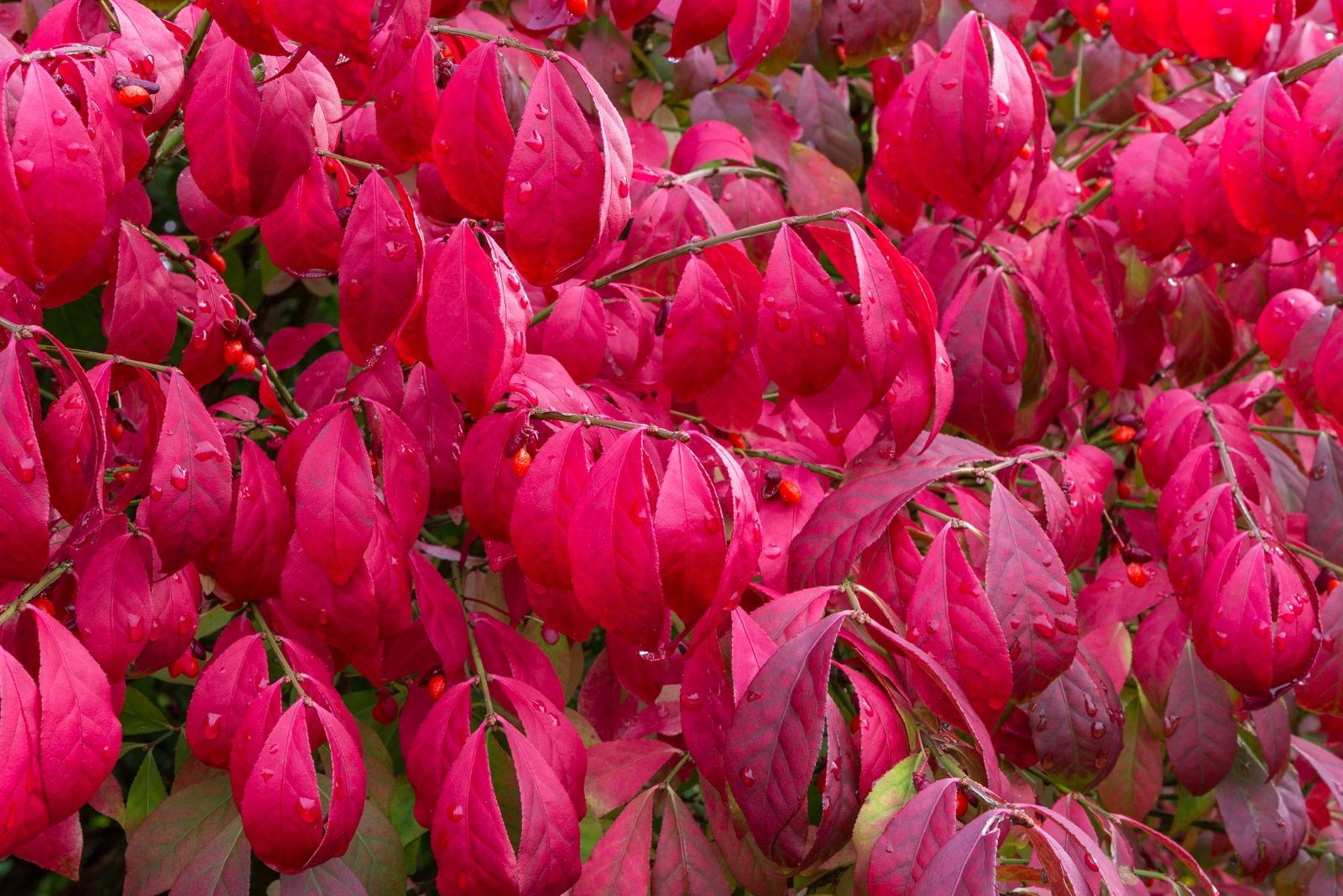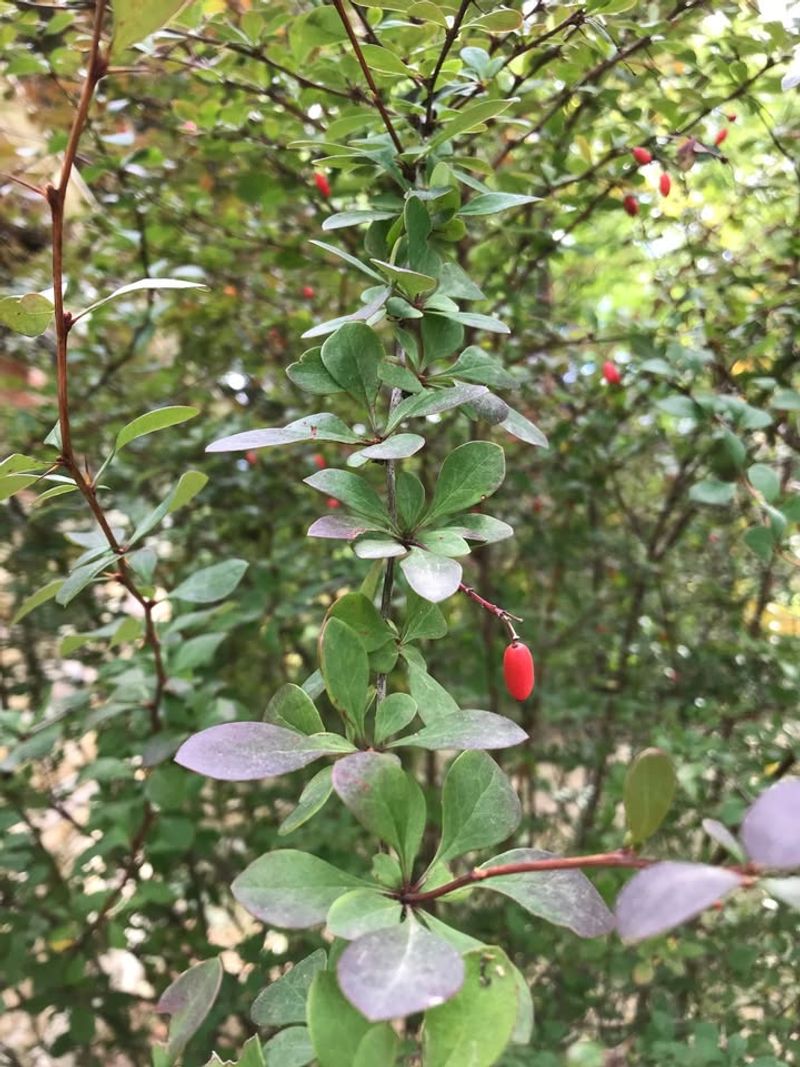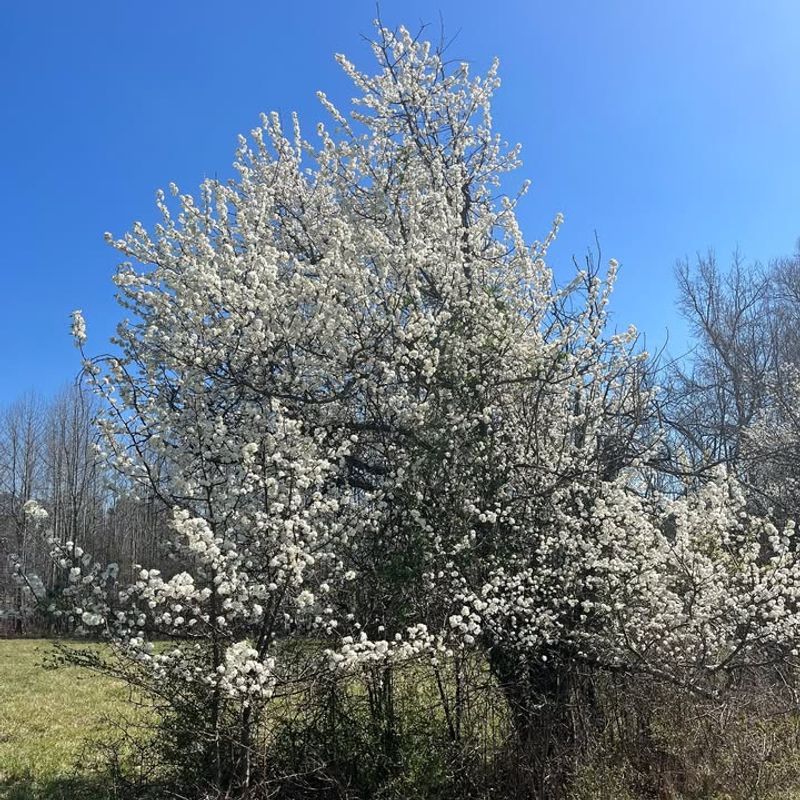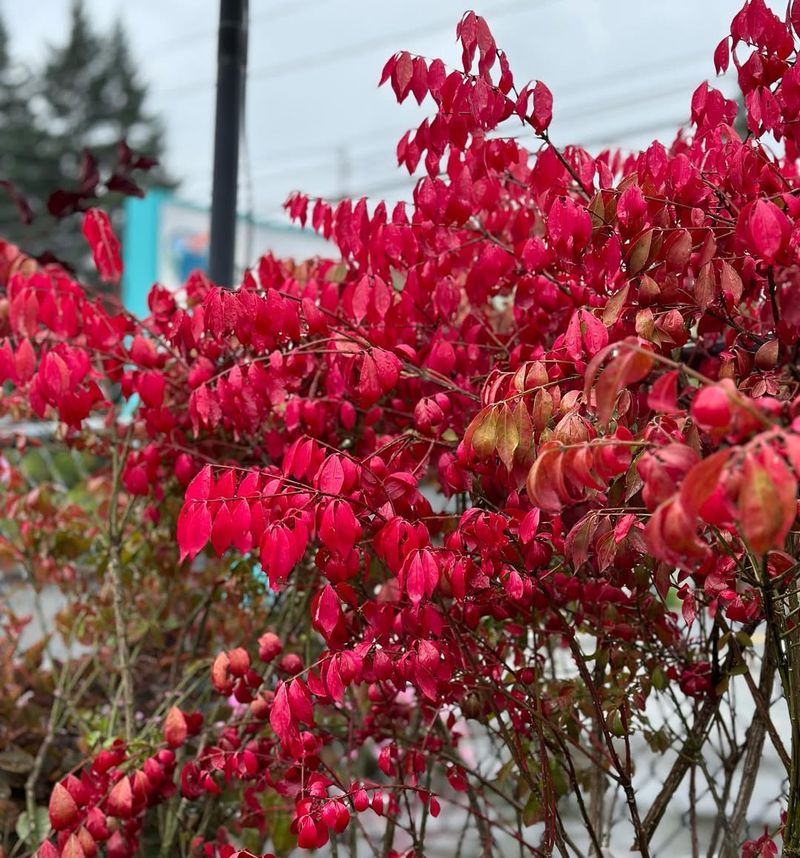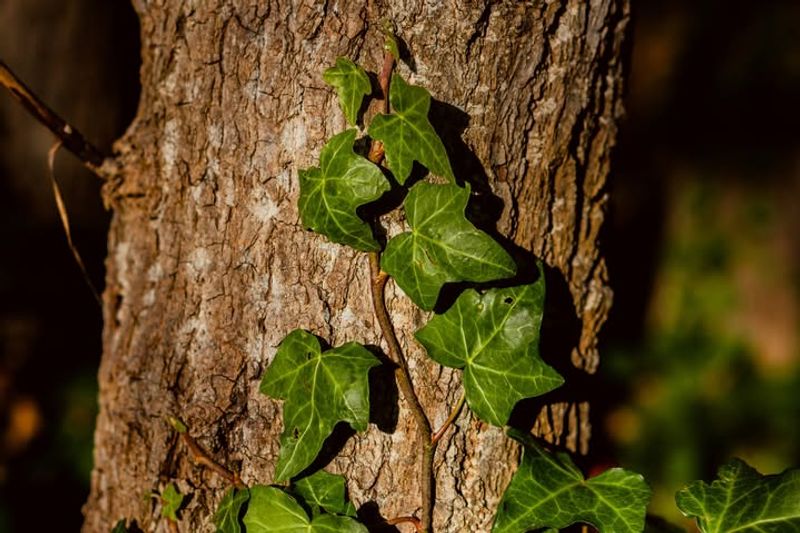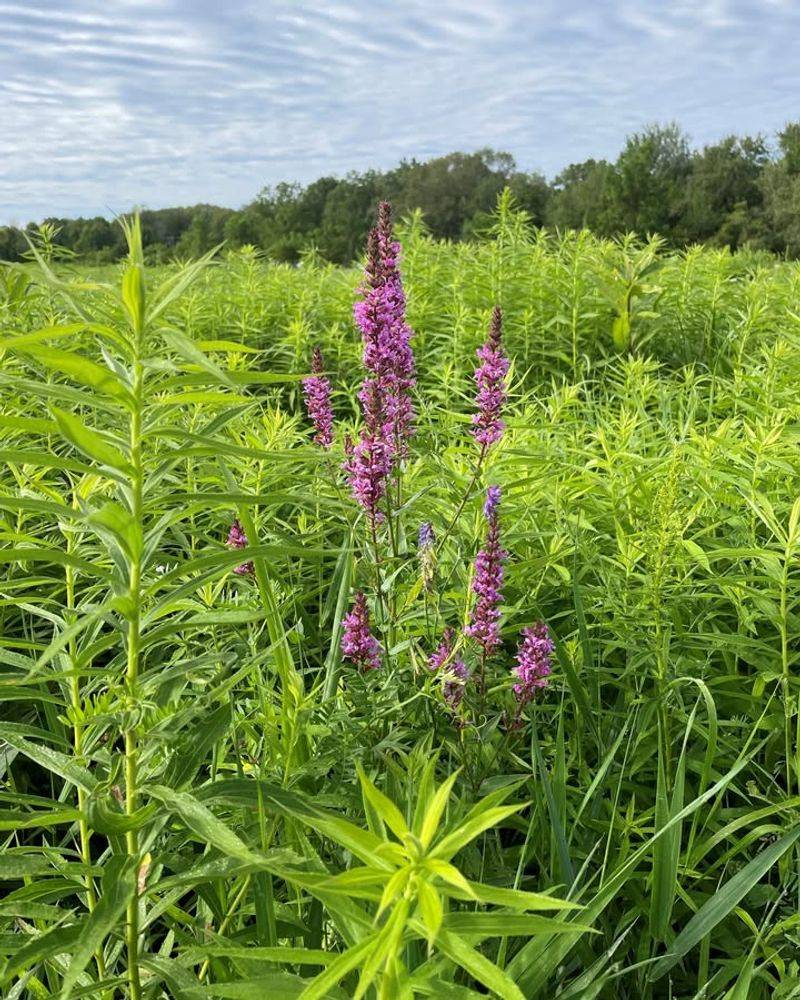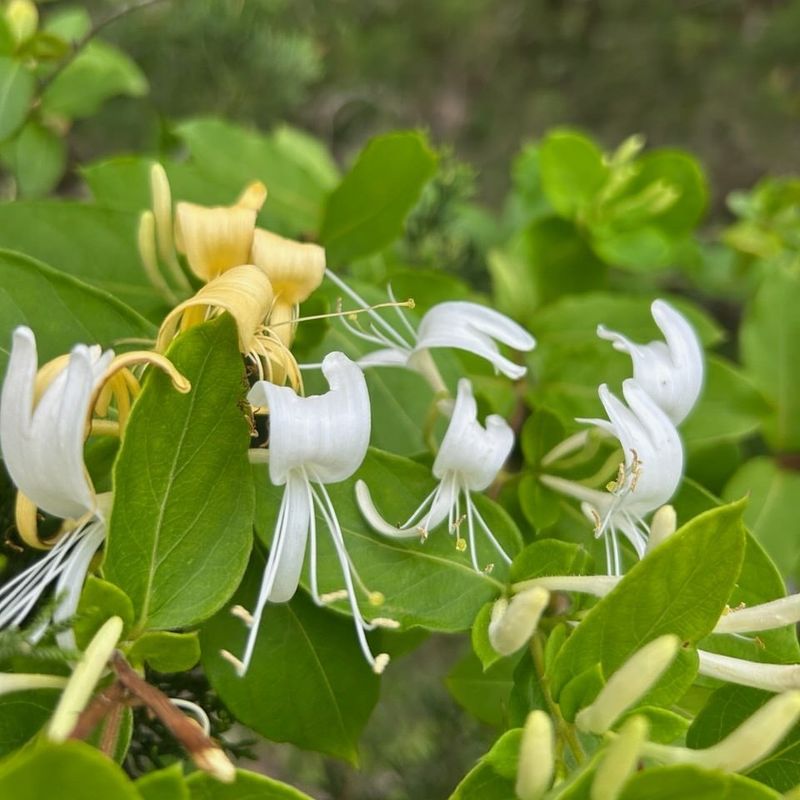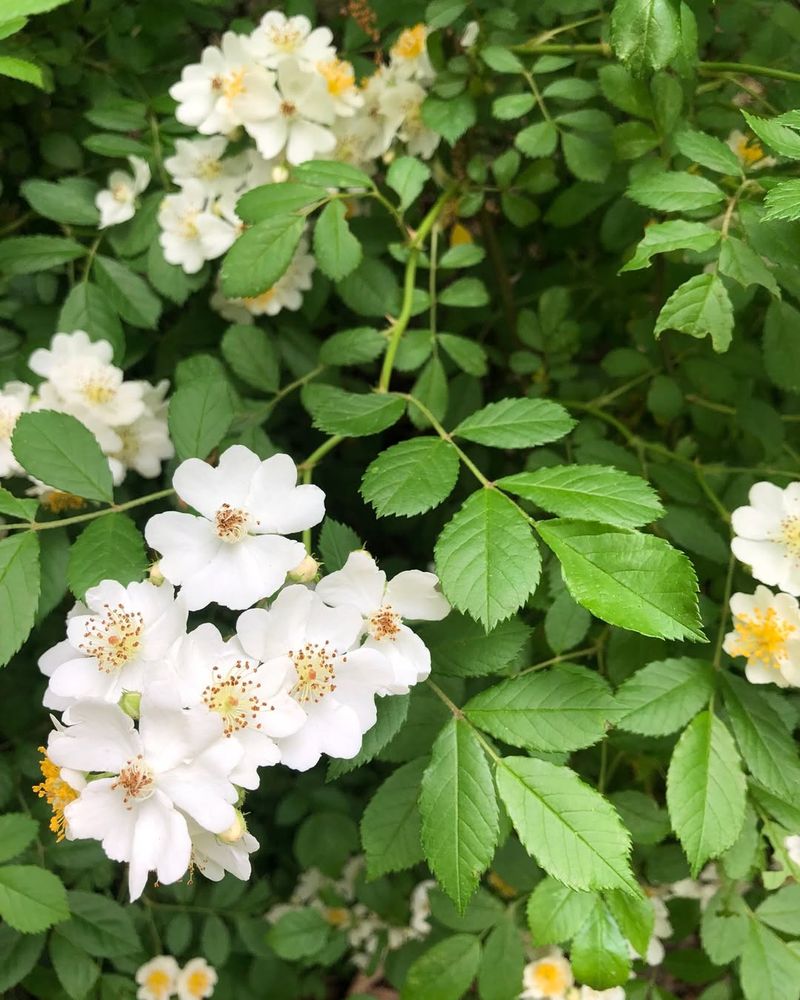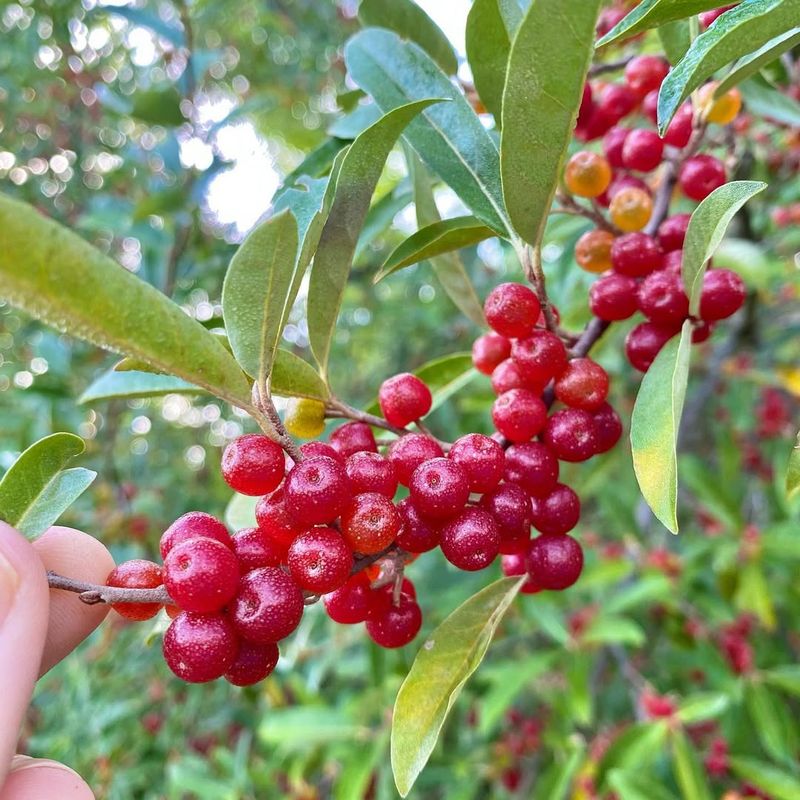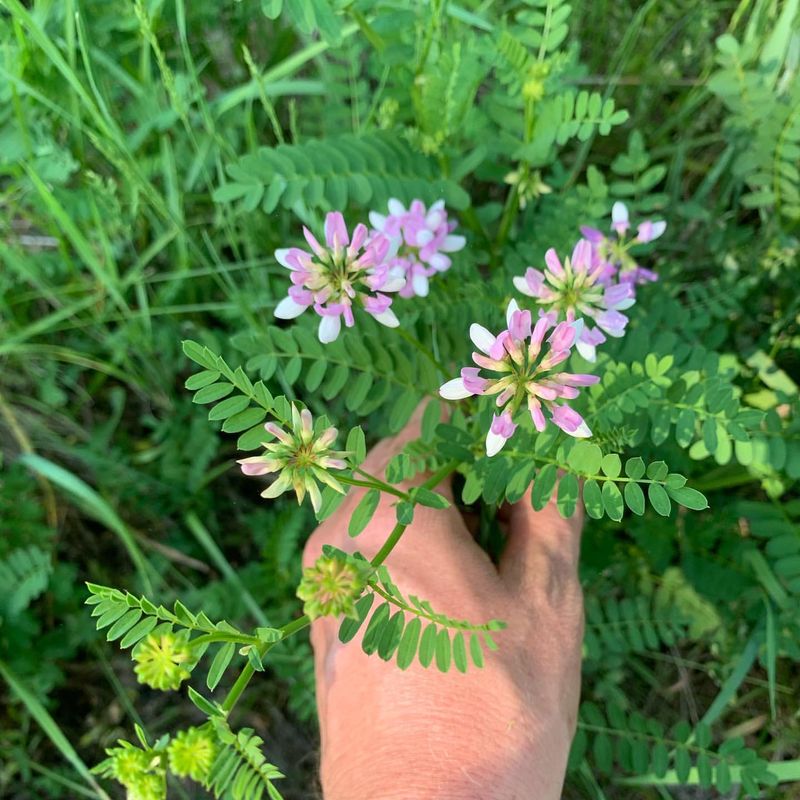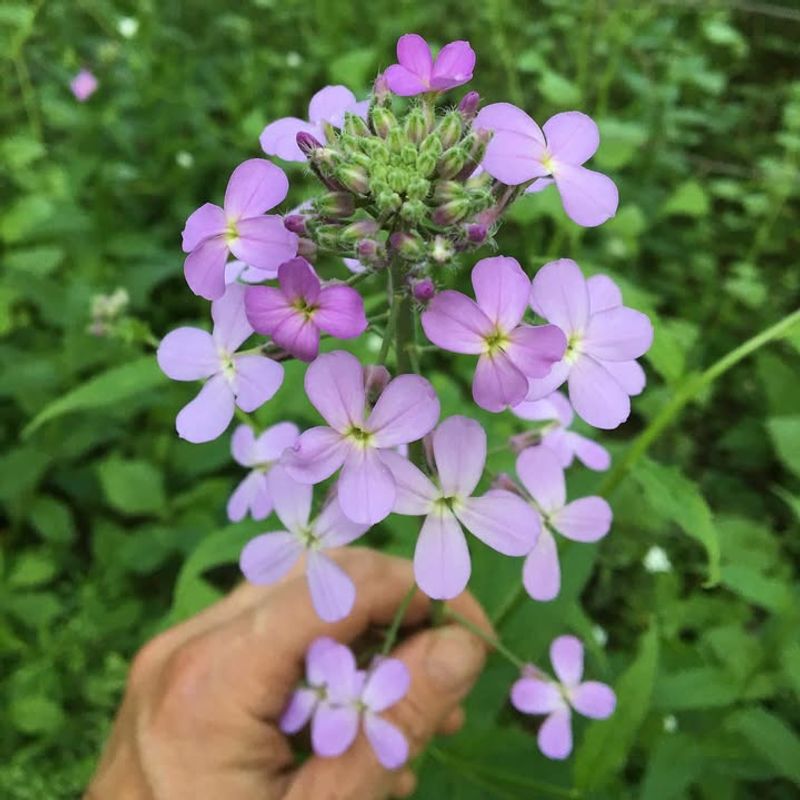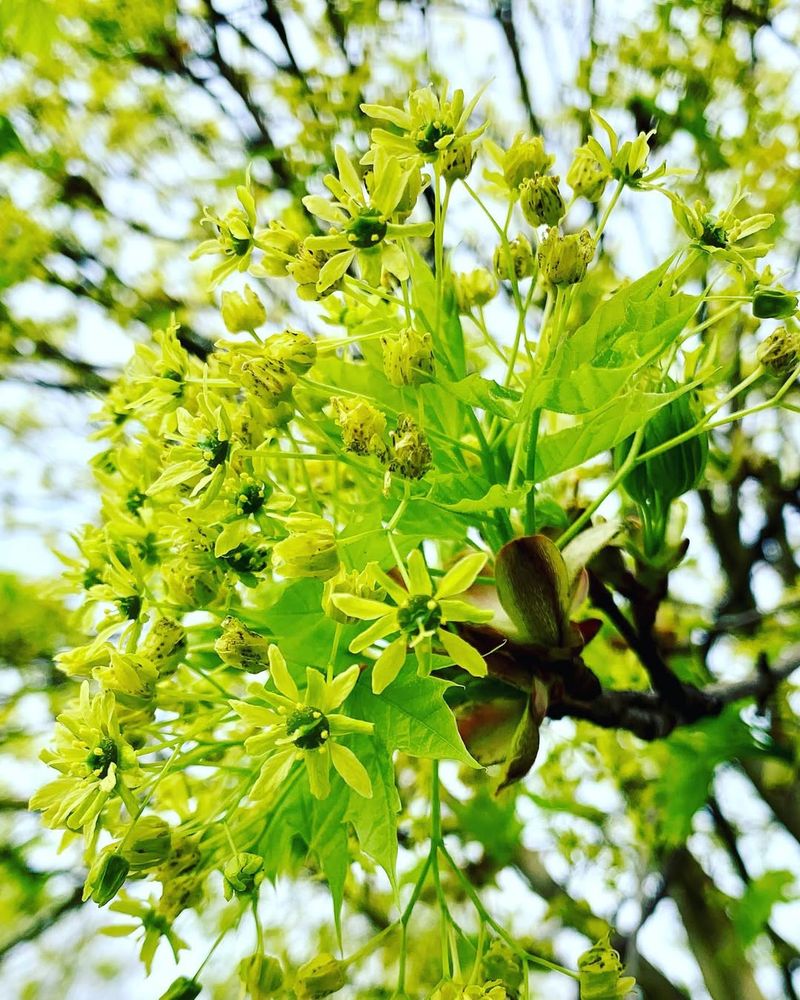Indiana gardeners might want to think twice before planting certain popular species in their yards. State officials are considering new regulations that could ban some common garden plants because they spread too quickly and harm native ecosystems.
Understanding which plants might be outlawed can help you make smarter choices for your garden and protect Indiana’s natural environment.
1. Japanese Barberry
Homeowners love Japanese Barberry for its colorful foliage and low maintenance requirements. But wildlife experts warn that this attractive shrub creates perfect hiding spots for deer ticks, which carry Lyme disease. The dense branches also crowd out native plants that birds and butterflies depend on for food.
Once established, barberry spreads rapidly through your yard and into nearby forests. Birds eat the berries and deposit seeds everywhere, making control nearly impossible without professional help.
2. Bradford Pear
Spring brings clouds of white blossoms to Bradford Pear trees lining many Indiana streets. Unfortunately, these popular ornamental trees have a nasty habit of breaking apart during storms, damaging property and blocking roads. Their weak branch structure makes them dangerous near homes and power lines.
Beyond safety concerns, Bradford Pears produce thousands of seeds that germinate easily in fields and forests. The resulting thorny wild trees form impenetrable thickets that wildlife cannot use for shelter or food.
3. Burning Bush
Few plants can match the spectacular crimson display that Burning Bush provides each autumn. Garden centers have sold millions of these shrubs to homeowners seeking easy fall color. However, environmental scientists discovered that Burning Bush escapes cultivation and invades natural areas with alarming speed.
The shrub produces abundant seeds that birds spread far and wide across Indiana’s forests. Native wildflowers struggle to compete with the aggressive root system, leading to reduced biodiversity in affected areas.
4. English Ivy
Gardeners appreciate English Ivy for covering ugly fences and providing evergreen ground cover year-round. This seemingly innocent vine hides a destructive nature that threatens Indiana’s mature trees and woodland ecosystems. The heavy vines climb tree trunks, blocking sunlight and adding dangerous weight to branches.
During winter storms, ivy-covered trees topple more easily than bare ones, creating hazards and expensive cleanup costs. The dense ground coverage also prevents native woodland flowers from sprouting each spring.
5. Purple Loosestrife
Wetland edges burst with purple beauty when Loosestrife blooms throughout summer months. Each plant produces millions of tiny seeds that spread through water and mud, quickly dominating marshes and pond edges. Native wetland plants cannot compete with the aggressive growth rate.
Waterfowl and other wildlife lose critical food sources when Purple Loosestrife takes over their habitat. Indiana’s remaining wetlands face serious threats from this European import that gardeners once considered a lovely addition to water features.
6. Japanese Honeysuckle
Sweet fragrance and pretty flowers make Japanese Honeysuckle a favorite for covering arbors and fences. Kids love pulling the flowers to taste the nectar drop inside each bloom. But this vigorous vine grows so aggressively that it smothers young trees and native shrubs beneath heavy blankets of foliage.
Forest edges become impenetrable tangles where nothing else can grow or thrive. Wildlife habitats suffer when honeysuckle replaces diverse native plants with monoculture thickets.
7. Multiflora Rose
Farmers once planted Multiflora Rose as living fences to contain livestock and prevent soil erosion. The plan backfired spectacularly when the thorny shrubs escaped into pastures, forests, and roadsides throughout Indiana. Dense thickets with vicious thorns make hiking trails impassable and reduce grazing land for cattle.
Each plant produces hundreds of small rose hips that birds eagerly consume and spread. Removing established plants requires heavy equipment and repeated treatments over several years.
8. Autumn Olive
Silvery leaves and abundant red berries give Autumn Olive ornamental appeal for landscaping projects. Conservation groups actually promoted planting this shrub decades ago for wildlife food and erosion control. Scientists later realized their mistake when the fast-growing plants invaded old fields and forest edges across the state.
The nitrogen-fixing roots change soil chemistry, making conditions unfavorable for native Indiana plants. Dense stands block sunlight and monopolize water resources that other species need.
9. Crown Vetch
Highway departments planted Crown Vetch along roadsides for decades to prevent erosion on steep slopes. The pink flowers create pretty displays during summer, and the plant requires virtually no maintenance once established. Unfortunately, Crown Vetch refuses to stay where planted and invades nearby natural areas with aggressive underground runners.
Native prairie plants and wildflowers disappear when Crown Vetch moves in and forms dense mats. The tough roots make removal extremely difficult without damaging surrounding vegetation.
10. Dame’s Rocket
Many people mistake Dame’s Rocket for native phlox because of the similar purple and white flowers. Wildflower seed mixes often included this European import, spreading it throughout Indiana’s roadsides and forest edges. The biennial plant produces thousands of seeds that remain viable in soil for many years.
Once established in an area, Dame’s Rocket outcompetes native wildflowers that pollinators depend on for nectar. Its early spring growth gives it an unfair advantage over slower-starting native species.
11. Norway Maple
Shade-loving homeowners planted Norway Maples extensively because they tolerate urban pollution and grow quickly. The dense canopy creates deep shade that prevents grass and other plants from growing underneath. Seedlings pop up everywhere, gradually replacing native sugar maples and oak trees in Indiana forests.
The shallow root system damages sidewalks and foundations, creating expensive repair bills. Native trees provide better habitat value for insects, birds, and other wildlife than these European imports.

